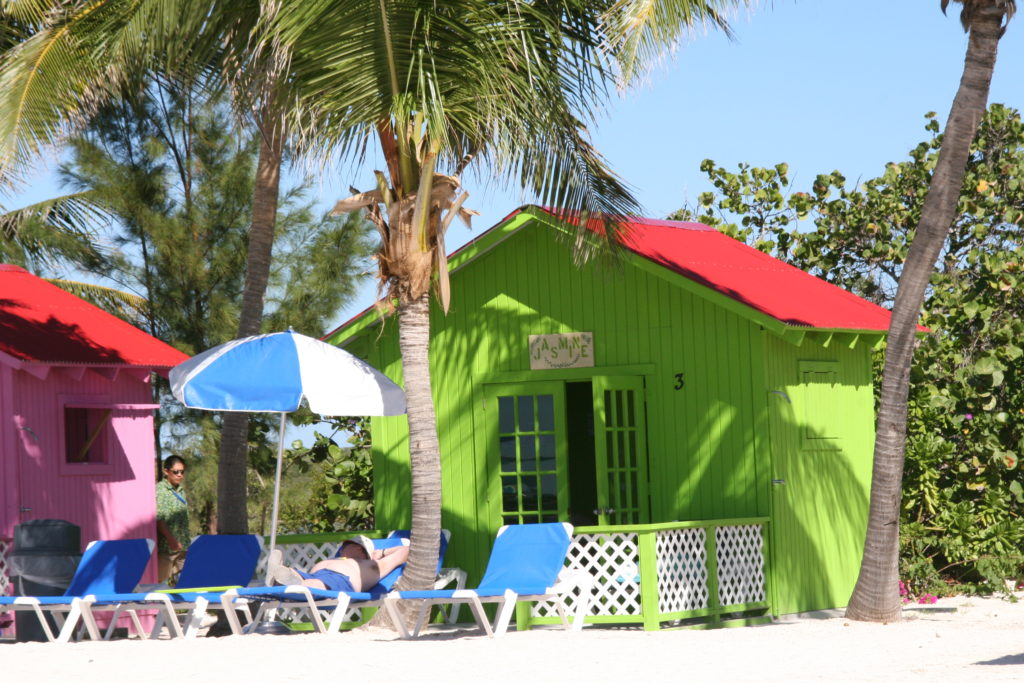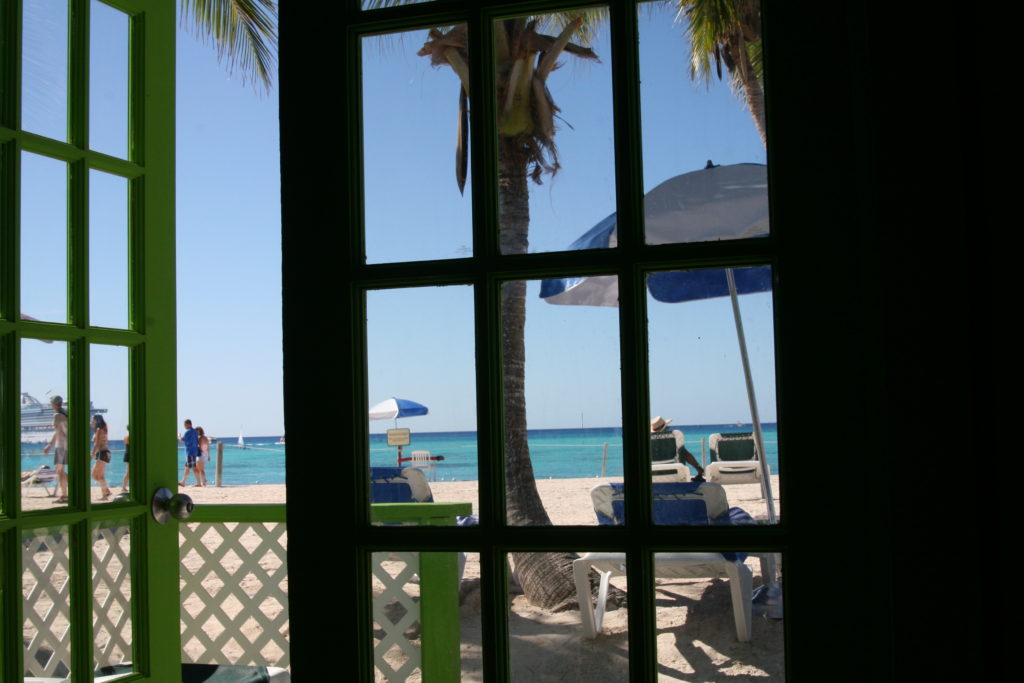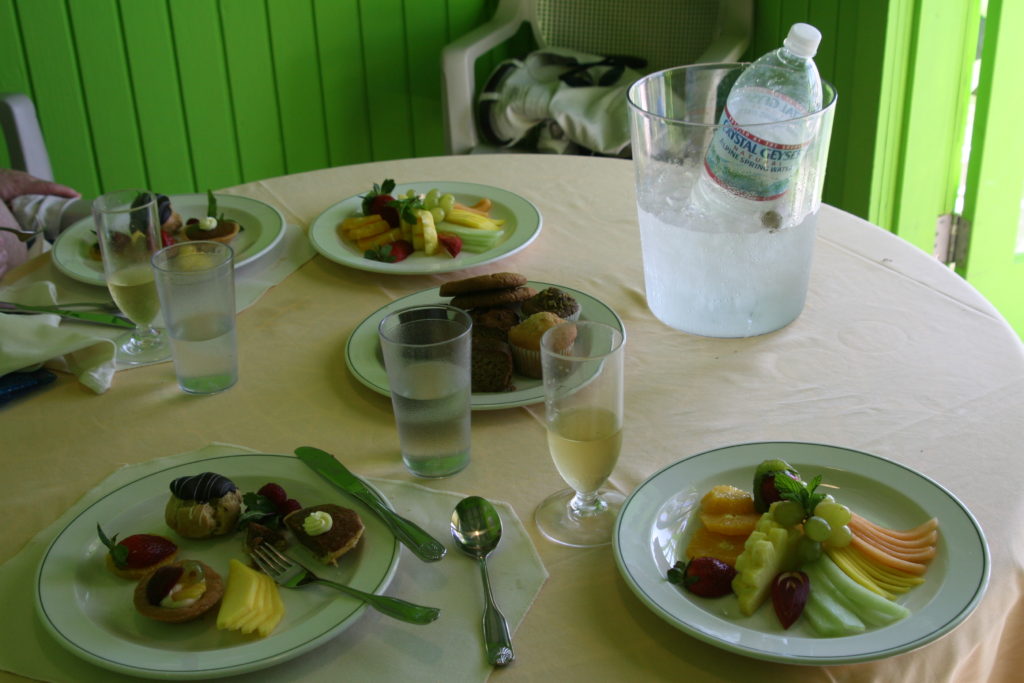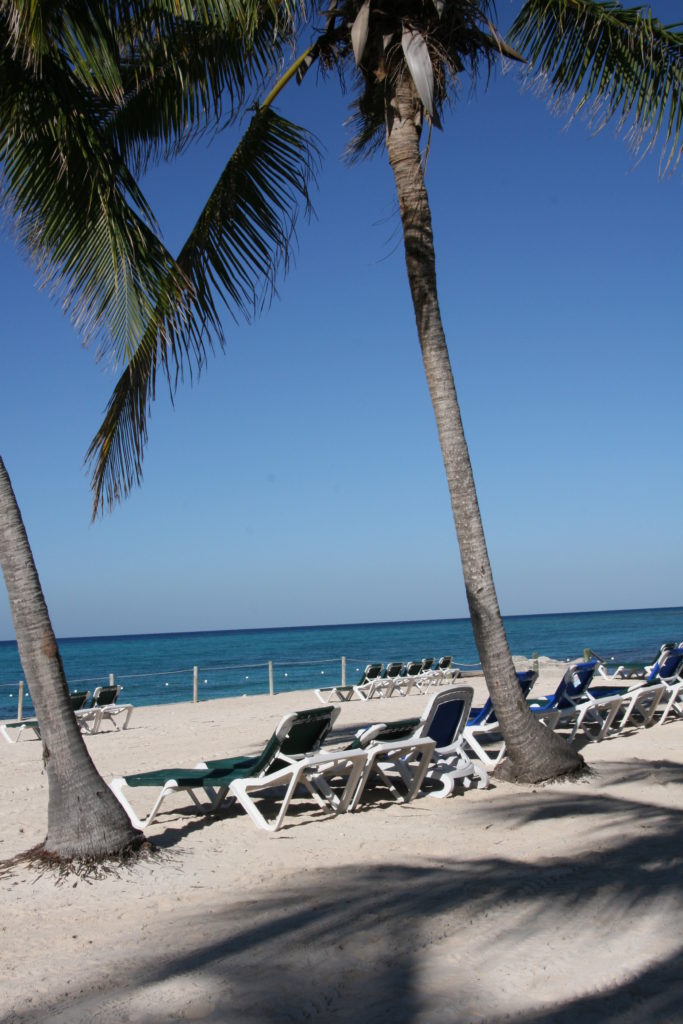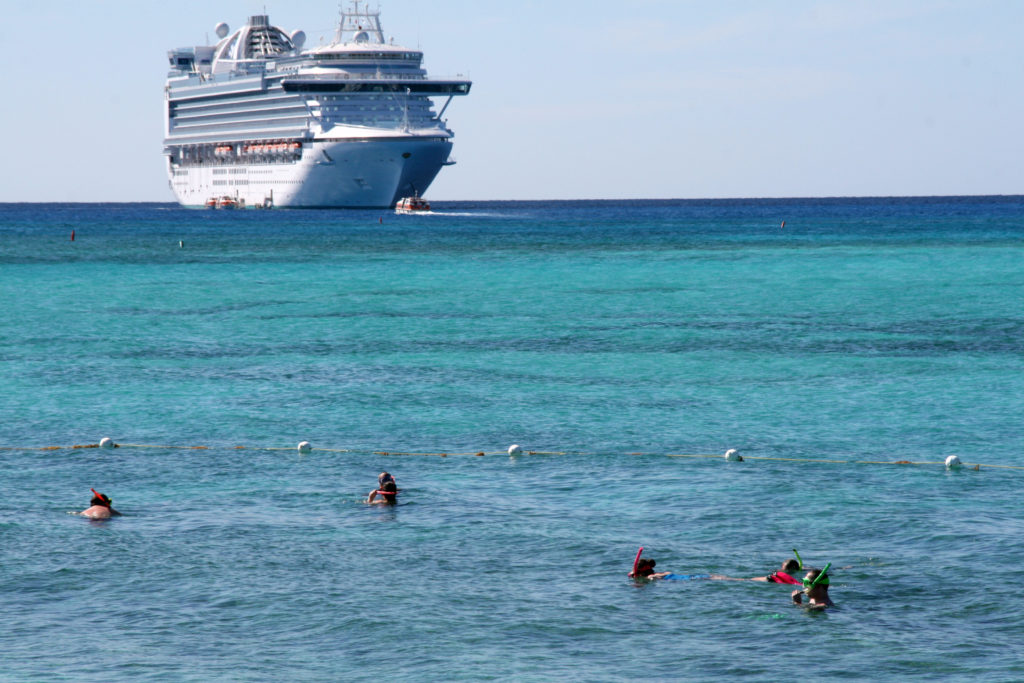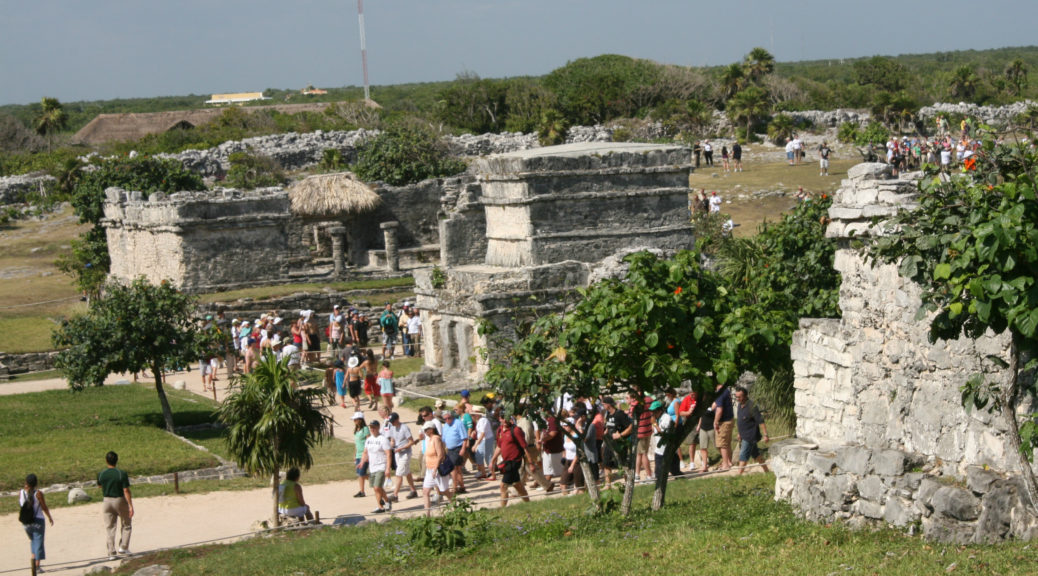
Ports of Call on Western Caribbean Cruise – Part Two
After leaving Grand Cayman, we sailed to Cozumel, Mexico. We had booked a shore excursion, Tulum, Lost Civilization of the Mayans. We took a ferry from Cozumel to Playa del Carmen where we met our guide. Before exploring the ruins, we saw The Danza de los Voladores, or the Dance of the Flyers. It is an ancient ceremony still performed in parts of Mexico and Guatemala. The ritual was recognized as an “Intangible Cultural Heritage” by UNESCO in 2009, a few months after our visit. This is an explanation of the ritual from the UNESCO site:
The ritual ceremony of the Voladores (‘flying men’) is a fertility dance performed by several ethnic groups in Mexico and Central America, especially the Totonac people in the eastern state of Veracruz, to express respect for and harmony with the natural and spiritual worlds. During the ceremony, four young men climb a wooden pole eighteen to forty metres high, freshly cut from the forest with the forgiveness of the mountain god. A fifth man, the Caporal, stands on a platform atop the pole, takes up his flute and small drum and plays songs dedicated to the sun, the four winds and each of the cardinal directions. After this invocation, the others fling themselves off the platform ‘into the void’. Tied to the platform with long ropes, they hang from it as it spins, twirling to mimic the motions of flight and gradually lowering themselves to the ground.
https://ich.unesco.org/en/RL/ritual-ceremony-of-the-voladores-00175

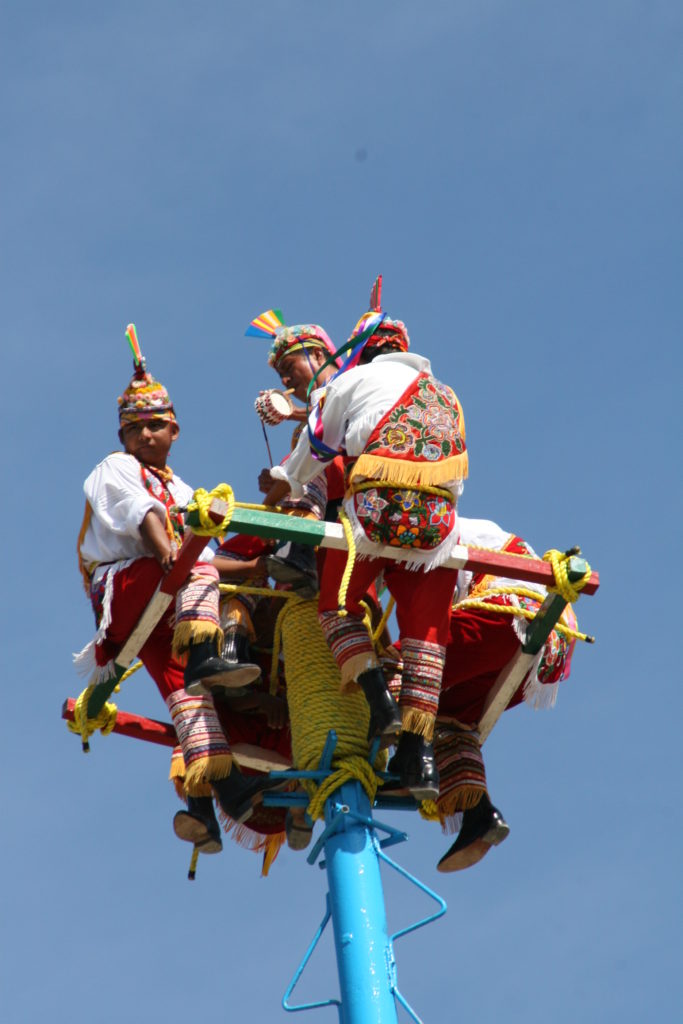
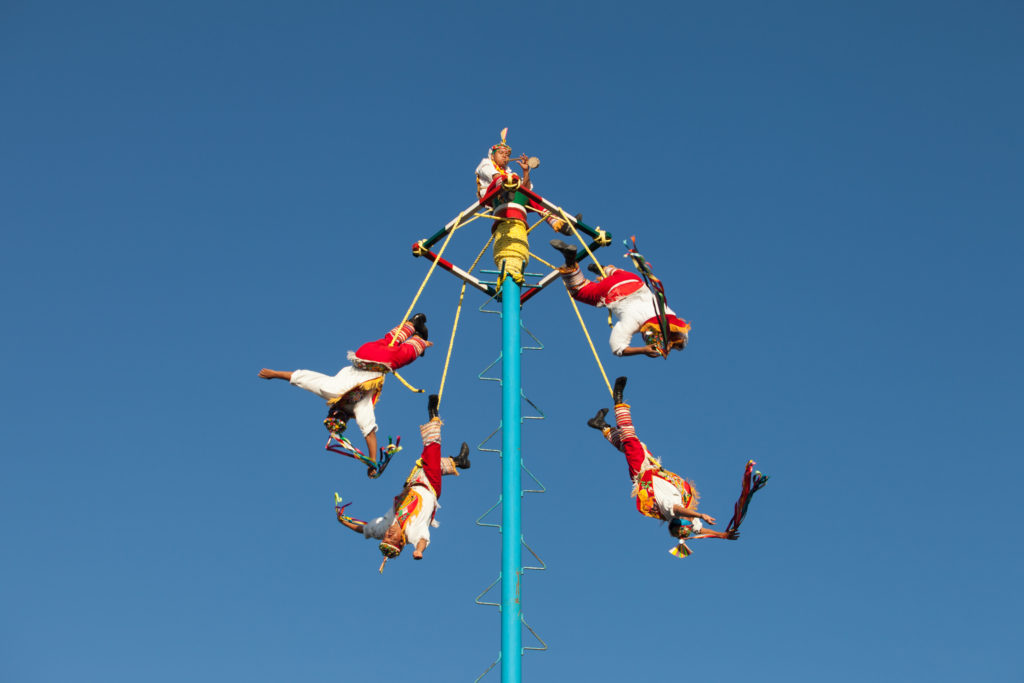
We then went to see the Mayan ruins in Tulum. They were built on a cliff almost 40 feet above the sea and had walls on three sides while the fourth side faced the Caribbean Sea. Tulum means “wall” although this is likely not its original name. There were five gateways found in the walls, one of which is pictured below. There were also watchtowers suggesting defense was very important to the Mayans. The rulers of Tulum lived within the walled city while others lived outside the walls. The original name of the city state was probably Zama which is translated “dawn.”
During the 11th through 16th centuries, Tulum was an important trading and religious center. The building in the next two pictures is the Castillo or Castle. It is the largest building on the site and is 25 feet tall. It was a temple pyramid. The central statue of three near the top of the building is that of the “descending god” or “diving god” (see fourth picture). It was the major god worshipped here. There is a stone block at the top of the stairs that archeologists believe was used to offer sacrifices. The Castillo also served as a kind of lighthouse. The side facing the Caribbean Sea (last picture) has two windows. Canoes sailing at night could use them as a guide to find safe passage into a cove.
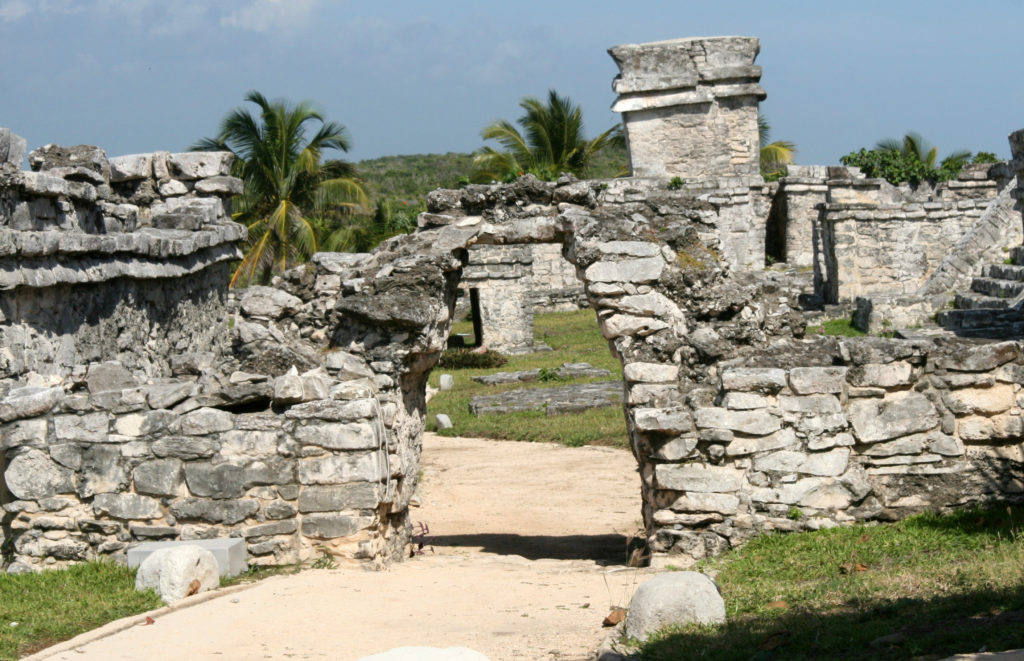
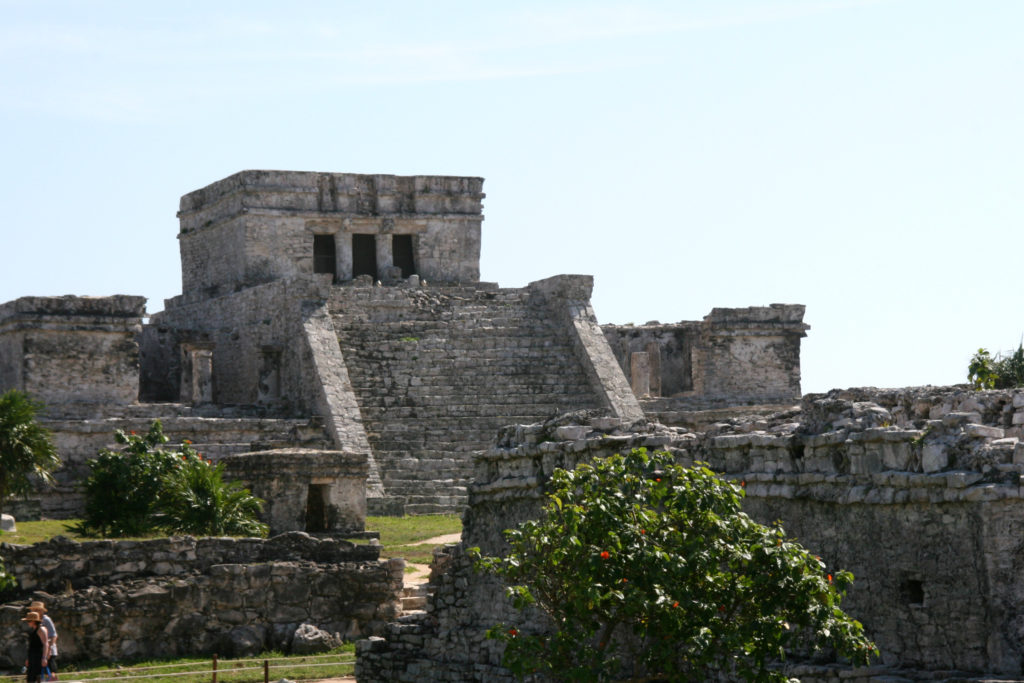
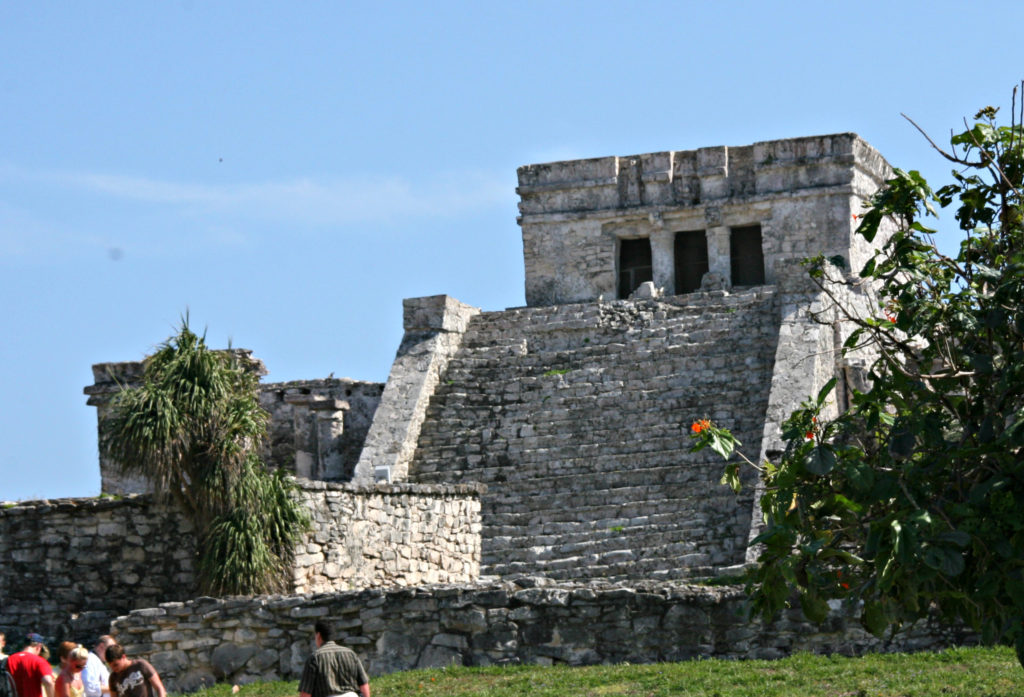
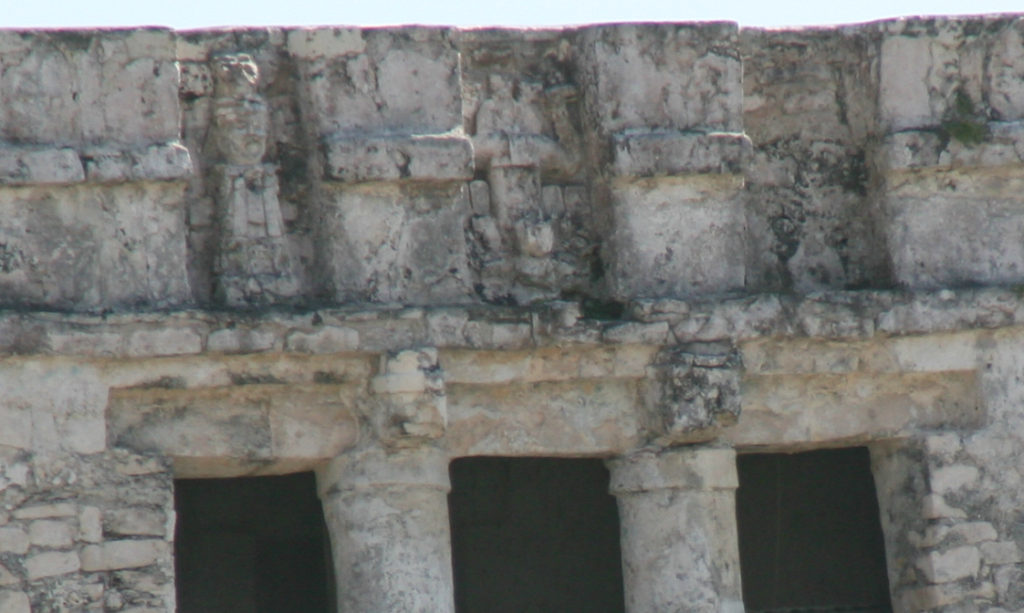
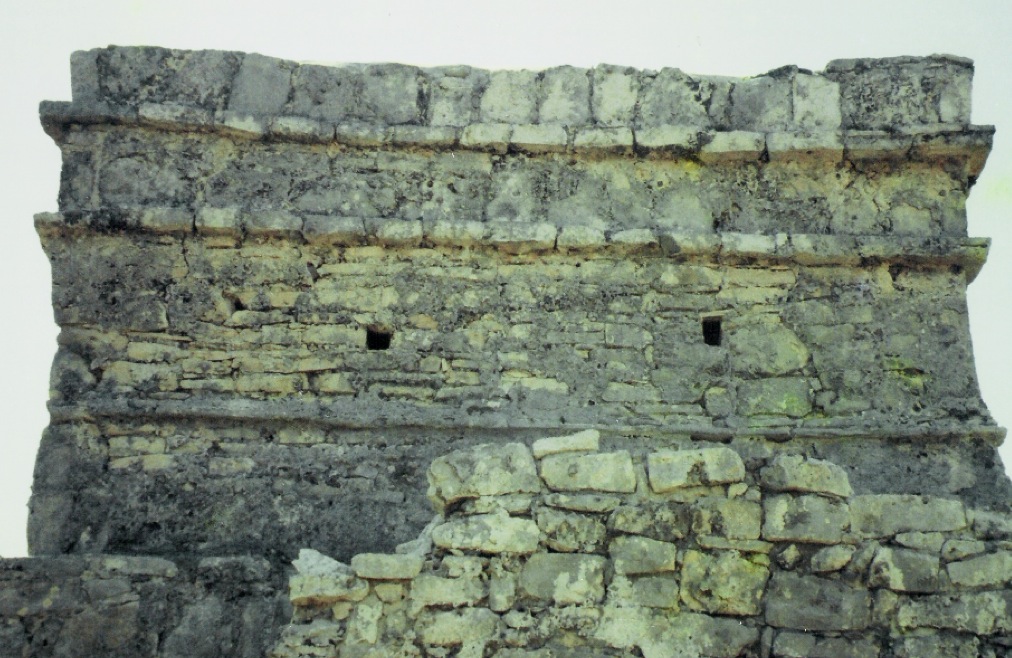
The next three pictures are of the Temple of the Descending God or diving god. It was named for the upside down figure above the doorway. The thatched roof is not original to the building, but provides some protection to the carving of the descending god sculpted into the wall.
The fourth picture in this section is known as House of the Columns, also known as the Great Palace. It was likely the residence for rulers. It was one of the largest houses in the complex, with four rooms. The roof, now collapsed, was supported by the columns. Two of the walls have also collapsed. The ruler was called a halach uinik who ruled on behalf of the gods. Their authority was passed down within their family, generally parent to child.
The last picture is one of several iguana we saw as we walked among the ruins. They are plant eaters and can grow five to six feet long.
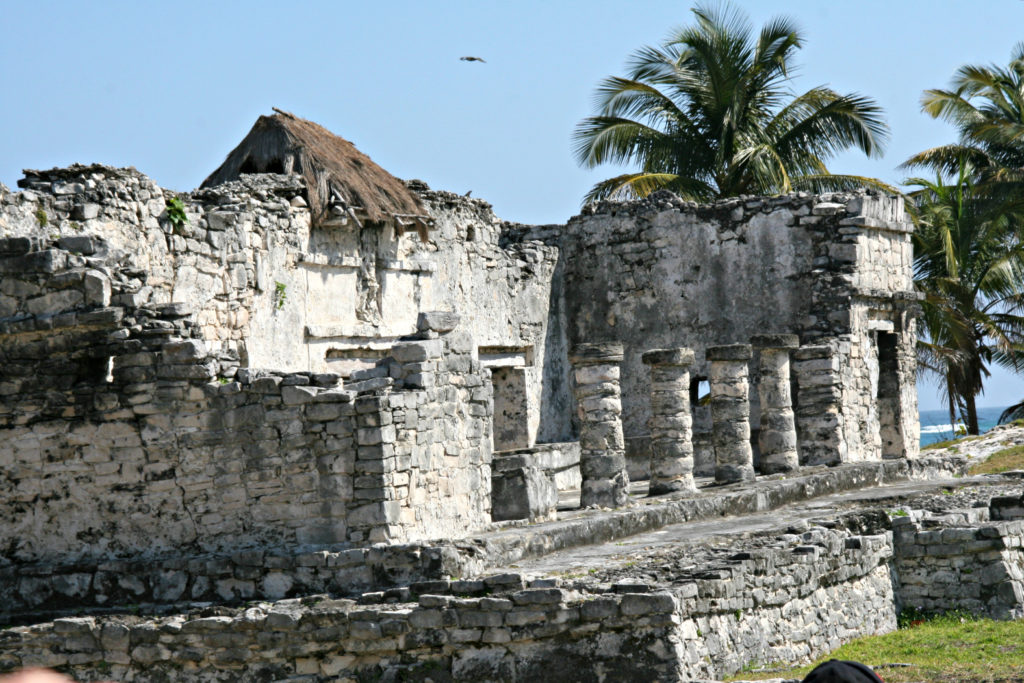

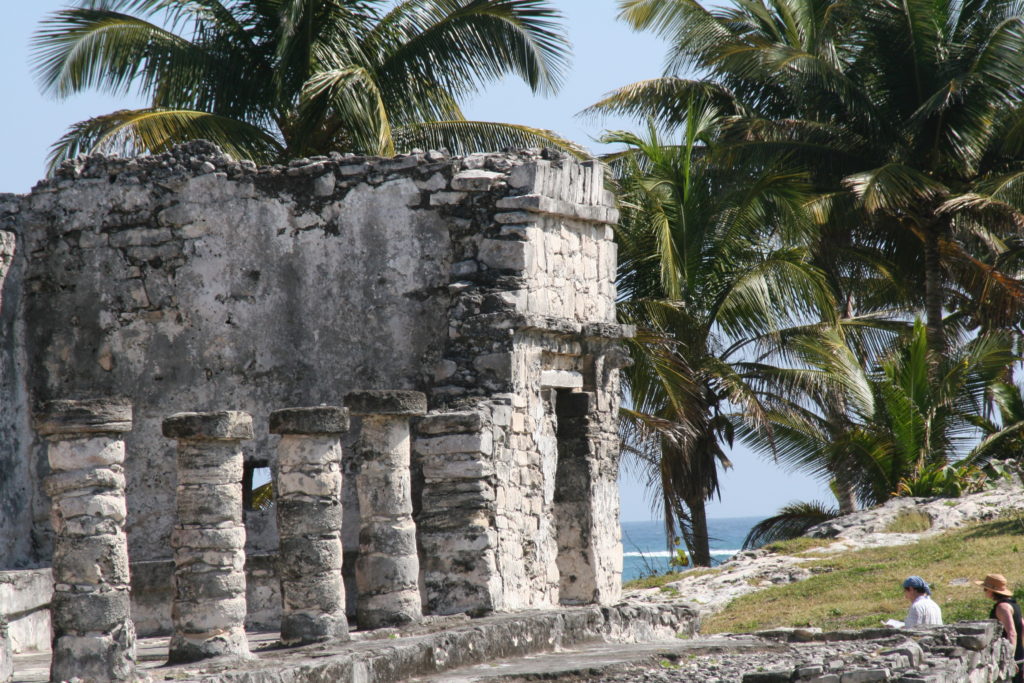

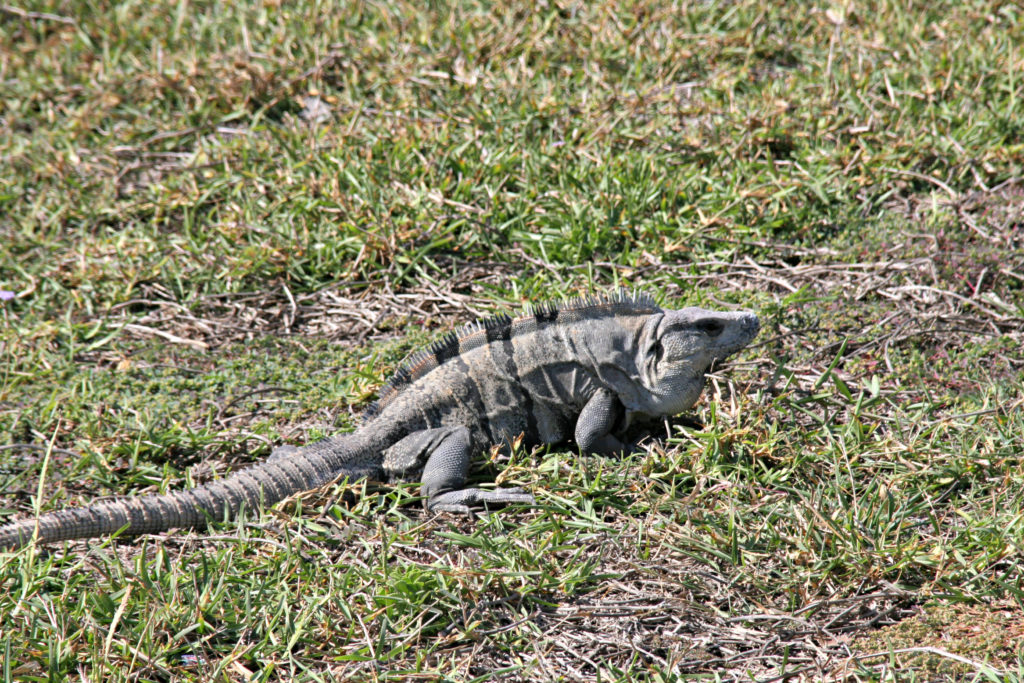
These are pictures of two more temples. The first two are of the Temple of the Frescoes, so named because of frescoes inside the temple. These probably date back to the 11th and 12th Centuries. Visitors are no longer allowed inside the temple to view the frescoes. The building was probably modified and added to through the years. This structure was used to track the movement of the sun so served as an observatory.
The last picture is the Temple of the Winds. It sits on a circular base which is associated with the god of wind, or Huracan (the word from which hurricane is derived). It is beautiful with the Caribbean Sea in the background.



Another treat at Tulum was walking in the sand and waves of the Caribbean Sea. Several people brought swim suits and really enjoyed the water! Tulum was very hot and there is very little shade. If you visit, I would suggest you use sun screen and also bring water with you – and maybe a swimsuit for a nice dip!

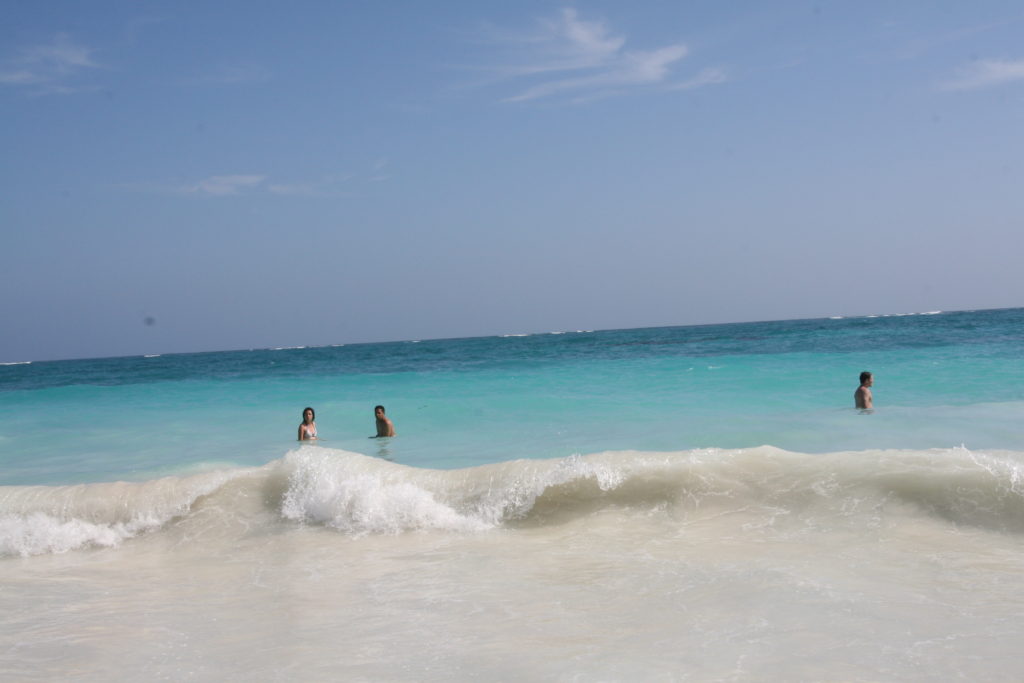
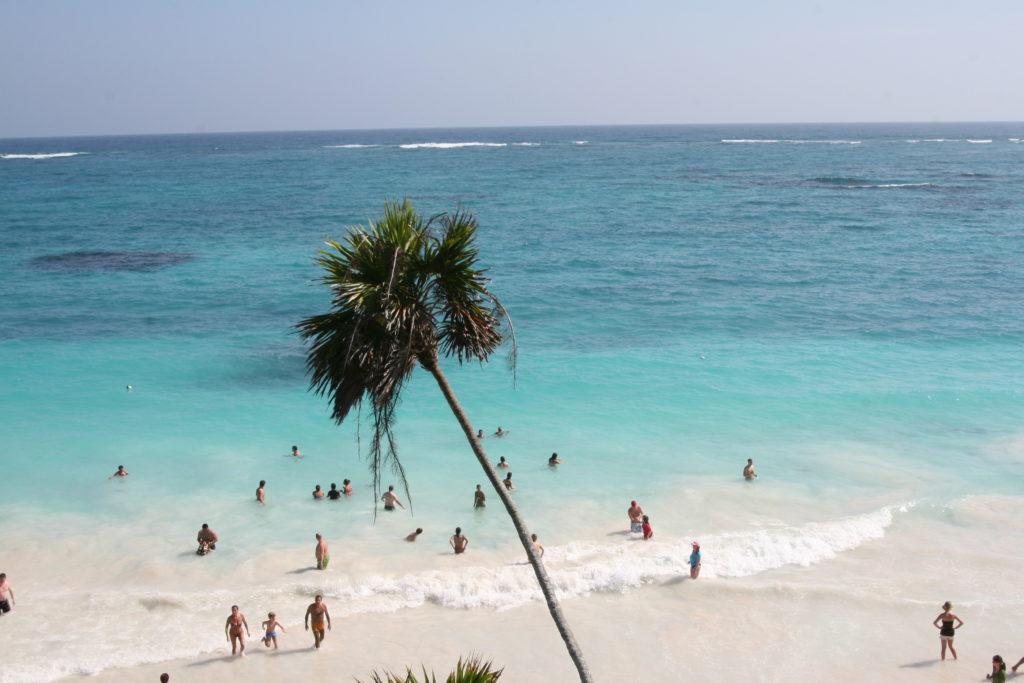
We returned to Cozumel and boarded our ship. Our next day was a “sea day” and the day after, we arrived at the Princess Cays in the Bahama’s. This is a resort that Princess Cruises owns. As a “shore excursion,” we reserved a bungalow and meal. The bungalow was close to the water and gave us a nice space. There were a lot of water activities offered. It was a relaxing day and a nice way to finish our cruise.
